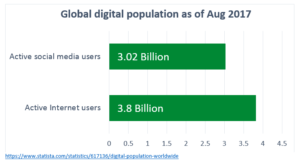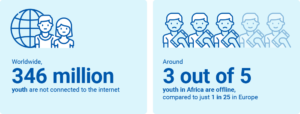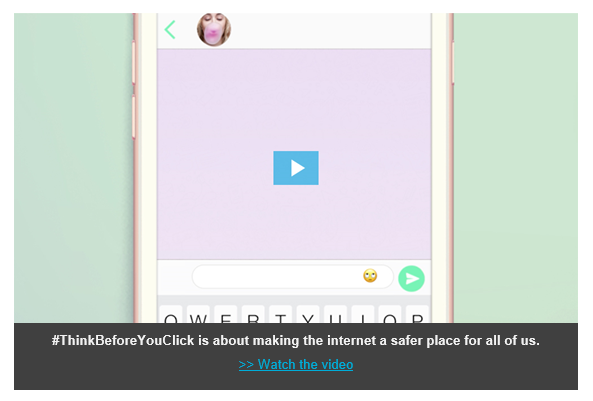Do you remember the first time you went online?
Chances are you knew life before the internet. But for children and adolescents growing up online, life is unimaginable without it.
 Digital technology has transformed the world we live in – disrupting entire industries and changing the social landscape. As the influence of digital technology – and especially the internet – has increased, the debate about its impact has grown louder: Is it a boon to humankind, offering unlimited opportunity for communication and commerce, learning and free expression? Or is it a threat to our way of life, undermining the social fabric, even the political order, and threatening our wellbeing?
Digital technology has transformed the world we live in – disrupting entire industries and changing the social landscape. As the influence of digital technology – and especially the internet – has increased, the debate about its impact has grown louder: Is it a boon to humankind, offering unlimited opportunity for communication and commerce, learning and free expression? Or is it a threat to our way of life, undermining the social fabric, even the political order, and threatening our wellbeing?
This is an interesting debate, but essentially an academic one. Because for better or for worse, digital technology is a fact of our lives.
UNICEF’s latest report, The State of the World’s Children 2017: Children in a digital world examines the different ways digital technology is affecting children’s and adolescent’s lives and life chances, identifying dangers as well as opportunities.
Fast facts:
|
One in three internet users worldwide is a child or adolescent, and young people are now the most connected of all age groups. From photos posted online to medical records stored in the cloud. Many children have a digital footprint before they can even walk or talk as a result of parents and/or family posting photos online.
Despite children’s massive online presence, too little is done to protect them from the perils of the digital world, says UNICEF’s latest report.
 Digital technology can be a game changer for disadvantaged children, offering them new opportunities to learn, socialise and make their voices heard – or it can be yet another dividing line. Millions of children are left out of an increasingly connected world. As digital technology rapidly evolves, so can the risks children face online – from cyberbullying to misuse of their private information to online sexual abuse and exploitation.
Digital technology can be a game changer for disadvantaged children, offering them new opportunities to learn, socialise and make their voices heard – or it can be yet another dividing line. Millions of children are left out of an increasingly connected world. As digital technology rapidly evolves, so can the risks children face online – from cyberbullying to misuse of their private information to online sexual abuse and exploitation.
As Ms Surabhi Dogra, a Youth Network Member of the Lancet Standing Commission on Adolescent Health and Wellbeing, comments.
“In the digital era, we as young people assume the identity of not only citizens but rather netizens (a user of the internet) of the digital world. As the report highlights, the inequities of society are now beginning to mirror themselves in the digital space. A glaring digital divide prevents children and adolescents from LMIC’s accessing the services of the internet like their counterparts from other parts of the world. Furthermore, the report also highlights how young females who may be battling the gender gap in their everyday lives also have to struggle to sustain a digital presence.
Digital technology carries immense potential to solve some of the developmental challenges faced by young people. On the other hand, the negative consequences of the digital wave threaten the privacy of young people who may not be equipped with levels of digital literacy necessary to assess as well as adopt measures of protection.”
In the report, UNICEF set out to uncover how the internet and digital technology are helping and hindering children’s learning, wellbeing and social relationships. The report makes a clear call to governments, the digital technology sector and telecom industries to level the digital playing field for children and adolescents by creating policies, practices and products that can help children and adolescents harness digital opportunities and protect them from harm.
“There is a need for moving towards the democratisation of the digital space while keeping the interests of an important part of the digital citizenry i.e. children and adolescents at the heart of policy making and implementation. The report’s recommendation on involving young stakeholders to voice their concerns and views about shaping their experience on the internet is critical. We as young people of the 21st century, should have a voice in shaping our realities in not only the physical but also the virtual world.”
Equally important, this report includes the perspectives of children and adolescents on the impact of digital technology in their lives – telling their own stories about the issues that most affect them. Hear their stories and learn about the urgent need to make the internet safer for children and adolescents while increasing access to digital technology for every child and adolescent, especially the most disadvantaged.
“For better and for worse, digital technology is now an irreversible fact of our lives,” said UNICEF Executive Director Anthony Lake. “In a digital world, our dual challenge is how to mitigate the harms while maximising the benefits of the internet for every child.”


